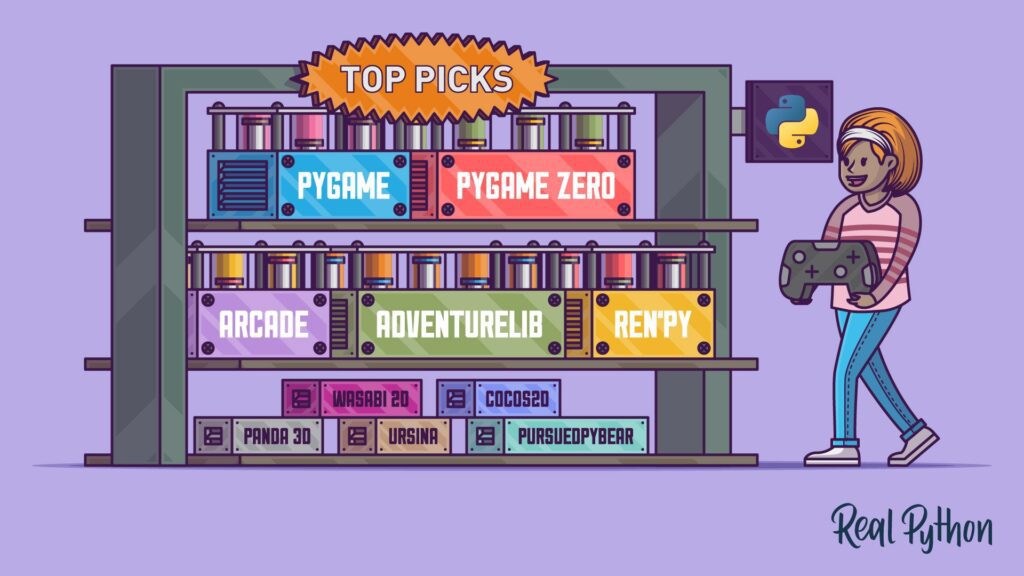Game development involves planning, game design, asset creation, programming, testing, and deployment. To make the process more efficient, developers use a variety of tools and frameworks. Game engines, art tools, audio tools, programming tools, and version control tools are some key tools used in game creation. Frameworks like Phaser, Corona SDK, Unreal Engine, Cocos2D, and Unity are popular frameworks used to create specific types of games. The game development process involves planning, design, asset creation, programming, debugging and testing, and deployment. Understanding this process and the tools and frameworks used can help aspiring game developers create immersive and engaging games.
From Pixel to Play: Understanding Game Development Tools and Frameworks
Game development is a complex process that includes everything from creating artwork to programming, testing, and marketing the final product. To make the process smoother and more efficient, developers use a wide range of tools and frameworks. In this article, we’ll explore the different stages of game development, the various tools and frameworks used in the process, and how they all come together to create a playable game.
Introduction to Games Development
Game development is a comprehensive process that covers a wide range of activities, including planning, game design, asset creation, programming, testing, and deployment. Typically, game development begins with the concept phase, where game designers come up with ideas for the game’s concept, mechanics, setting, story, characters, and objectives. Once the concept is finalized, the production phase begins, and the team moves on to create the assets, gameplay systems, and code necessary for the game. Once the game is completed, it goes through a testing phase before release.
Tools Used in Game Creation
Game development requires the use of a variety of tools and software to perform the different tasks. Some of the key tools include:
1. Game Engines – Game engines are software platforms that provide the core components of game development, such as graphics, physics, sound, and networking. Some popular game engines include Unity, Unreal Engine, and Godot.
2. Art Tools – Art tools like Adobe Photoshop, Maya, and Blender are used to create visual assets for the game, including character models, environments, and animations.
3. Audio Tools – Audio tools such as FL Studio, Reaper, and Audacity are used to create sound effects and music for the game.
4. Programming Tools – Programming tools like Visual Studio, Eclipse, and Xcode are used to write game code in various programming languages such as C++, C#, and Java.
5. Version Control Tools – Version control tools like GitHub and Perforce are used to manage the source code and collaborate with team members.
Frameworks Used in Game Development
Frameworks are collections of libraries, tools, and resources that are used to create specific types of games, such as mobile games, casual games, and multiplayer games. Some popular frameworks include:
1. Phaser – Phaser is an open-source HTML5 game framework that allows developers to create 2D games for desktop and mobile platforms.
2. Corona SDK – Corona SDK is a mobile game development framework that allows developers to create 2D games for iOS and Android platforms.
3. Unreal Engine – Unreal Engine is a powerful game development framework used to create high-end games with advanced graphics and physics.
4. Cocos2D – Cocos2D is an open-source game framework that allows developers to create 2D games for various platforms, including iOS, Android, and web browsers.
5. Unity – Unity is a cross-platform game engine that is used to create games for desktop computers, mobile devices, and consoles.
The Game Development Process
The game development process is a long and complex process that involves many stages. Let’s take a closer look at each stage of the process.
1. Planning – In the planning stage, game designers come up with ideas and concepts for the game, such as the game mechanics, setting, characters, and storyline. This stage is critical as it sets the foundation for the entire game development process.
2. Design – In the design stage, game designers create detailed plans for the game, including the user interface, gameplay mechanics, and level layouts.
3. Asset Creation – In the asset creation stage, artists create the visual and audio assets for the game, such as character models, backgrounds, music, and sound effects.
4. Programming – In the programming stage, developers write code to implement the game mechanics, artificial intelligence, and user interface. This is a critical stage as the quality of the code can impact the game’s performance and stability.
5. Debugging and Testing – In this stage, the game is tested by the QA team to identify and fix bugs and errors. This stage is critical as it can improve the game’s quality and ensure a smooth gameplay experience.
6. Deployment – In the final stage, the game is deployed to various platforms, such as desktop computers, mobile devices, and consoles. This stage involves marketing and promotion of the game to reach a wider audience.
Conclusion
Game development is a complex and exciting process that requires a mix of creativity, technical knowledge, and skill. Game developers use a wide range of tools and frameworks to bring their ideas to life, and every tool has its strengths and limitations. Understanding the game development process and the tools and frameworks used in it can help aspiring game developers create immersive and engaging games that players will love to play.
